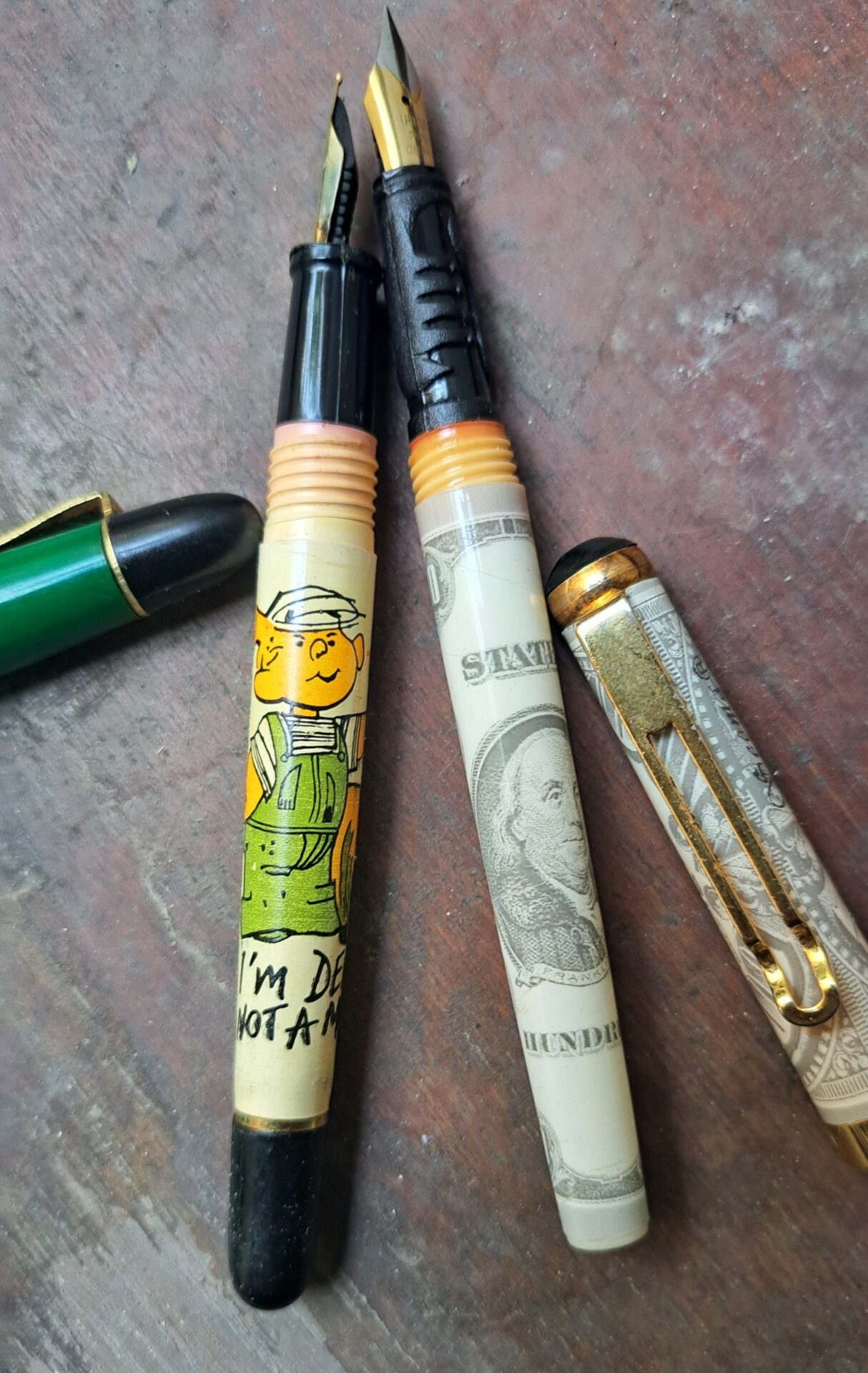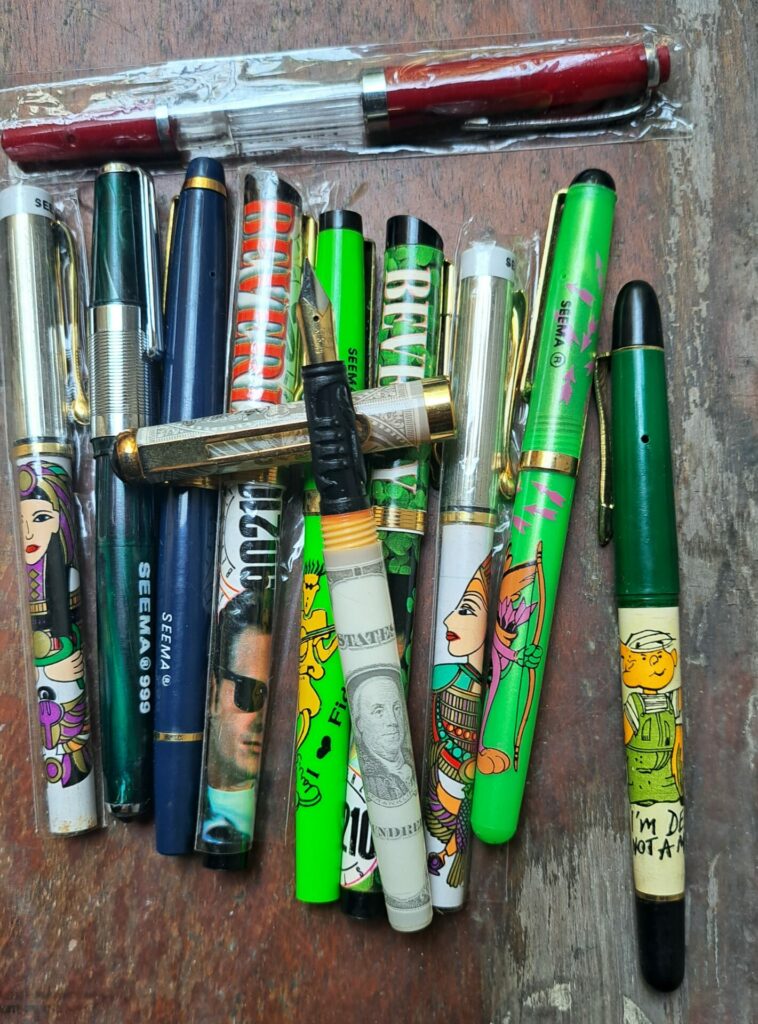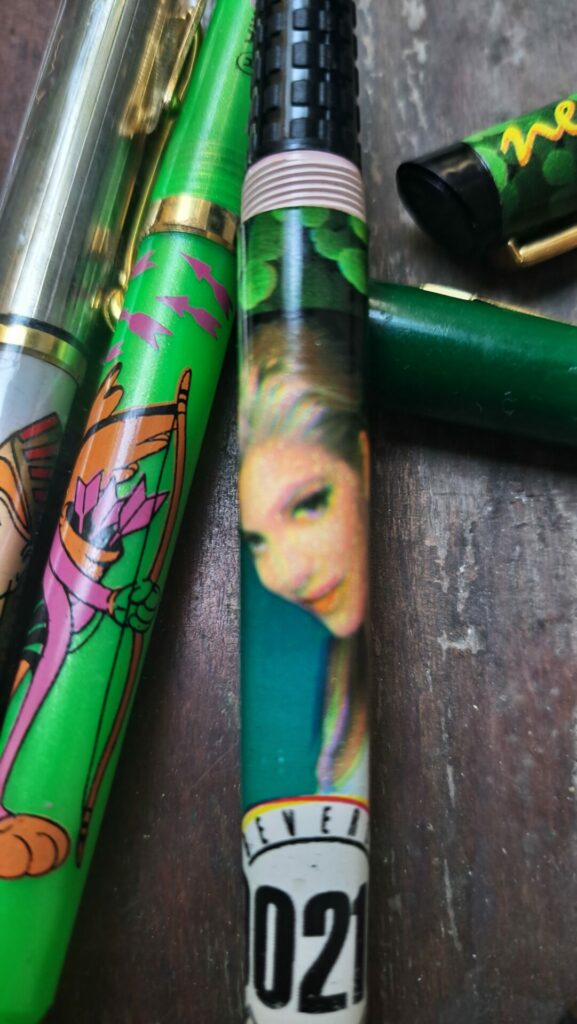
Those were simple, yet exciting times. Especially if you were a youngster going to school. No, we did not have even a fraction of the toys that young children possess these days, but we were content having the few possessions that we had. Fountain pens, among them.
Mind you, in those pre-liberalization days, when India was still a developing country, where rationing was the norm, “accumulation” was something that was frowned upon, especially in the middle-class environment where most of us had grown up. And fountain pens too were no exception. Besides, in those days of yore, even the cost of trinkets was considered (and reconsidered) before we were even allowed to throw a tantrum for another pen. One was a necessity, two a luxury, and three a definite no-no!
It was in these times that the printed pens had fired my imagination. Bright, with exciting images printed on them, I coveted them like anything, but try as I did, could not convince my parents to buy me one. As luck would have it, by the time I started earning and could afford them, they were nowhere to be found, the ballpoint pens having claimed their victim. Or perhaps, they had gone out of fashion. Or, whatever.

Imagine my ecstasy, when last year, at the Mumbai Pen Show, I saw them, again. I met the man behind the counter of Likhit Pens who had displayed them – Manoj Asrani. It was from him that I learned that the pens were made by Seema – a brand that was owned by his forefathers. Seema was an extremely popular brand, had a huge turnover, and used to operate in the bulk segment of the market, before, as I had pointed out earlier, they were forced out of the market by the onslaught of cheap ballpoint pens.
Now, reading the writing on the wall about an impending surge in the demand for fountain pens, Manoj Asrani is making a comeback with his ware. He has christened his new brand “Likhit” and has some very fine writing instruments, aimed at the price-conscious bulk segment, where they used to operate in their earlier avatar as Seema. The market in western India with Maharashtra as the epicenter has always been a thriving region for the fountain pen trade and one can be reasonably certain that the Asranis will succeed in reviving old links shortly. Especially in view of the robust nature of the products that they have on offer.
However, it was the printed pens, with their bright images and cartoons – from Dennis the Menace to Egyptian hieroglyphs and Hollywood stars – that swayed my imagination. Naturally, I just had to have them in my collection. When I had first asked Manoj Asrani for them, he had brushed aside my plea stating that they were not for sale. But I did not give up, met him twice after that, once when he was in Kolkata last April and again earlier this year in Chennai during the pen show. To cut a long story short, I have a few of the Seema vintages in my collection now.

There is something more about the pens from this genre. Yes, going by today’s prices, they were dirt cheap. Naturally, they did not have the unnecessary accouterments and would have jacked up their prices, making them unattractive. They do not boast of fancy filling systems either and are mostly vanilla eyedroppers. But they were extremely robust and performed the function that they were intended for – they write admirably. As I ink up these pens and put the nibs on paper, they hurl me back in time, and I scribble aimlessly as nostalgia comes flooding in. I wish these pens would burp and spill ink like they used to when we were in school, soiling our shirt pockets and leaving stains on our fingers – but so far, they haven’t, perhaps they too are as conscious as I am about using them now, after so many decades of separation.
There is something about writing with a so-called cheap pen. Somehow, even though I know it is against the popular perception, I find writing with some of them to be extremely pleasurable. There is a strange feeling of ennui that spreads through my fingers as these simple steel nibs scratch on the surface of the paper, transferring the ink, thereby helping me record my thoughts and feelings. These pens are generally light in weight, and being mass-produced, somehow are representative of the man on the street, personifying his puny dreams, representing his apparently insignificant achievements. Yet, when they come together, in sheer numbers, they are a force that can topple nations and rewrite histories. This unknown and unsung pen, therefore, is truly representative of an epoch .
Manoj Ansari may not revive the Seema brand. But Likhit is here to stay and I hope that he reintroduces some of these gems from our past.
